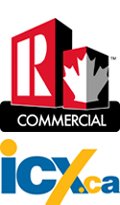How to Use Internal Rate of Return as a Measure of Real Performance in Commercial Real Estate
 Ever wonder which metric is the best way to analyze a piece of real estate? Me too! There are so many to choose from. Cap rates, ROI, gross rent multipliers, net rent multipliers, leveraged rates of return, yields, etc., etc. ad nauseum. The problem I see with most of these is that they look at a snapshot in time for a given asset and don't take into account increases or decreases in income over time.
Ever wonder which metric is the best way to analyze a piece of real estate? Me too! There are so many to choose from. Cap rates, ROI, gross rent multipliers, net rent multipliers, leveraged rates of return, yields, etc., etc. ad nauseum. The problem I see with most of these is that they look at a snapshot in time for a given asset and don't take into account increases or decreases in income over time.
Enter the realm of IRR or 'internal rate of return'. The internal rate of return shows the rate of return over a period of time and takes into account variables in income over that period. Rather than looking at just one point in time, you get a picture of the return you should expect during your entire anticipated holding period.
Let's look at a very simple example:
123 Any Street, Peterborough, Ontario is a hypothetical office building of 21,000 square feet with a projected first year net operating income of $105,000. Prevailing market cap rates indicate you should be looking at 8.5% as your 'going-in' rate. This puts a hypothetical value of $1,235,000 on the property (give or take a few dollars). Pretty simple, income divided by cap rate equals value.
What if you did some digging into the rent roll and discovered that one of the tenants, who occupies about 4,000 square feet of the building and therefore generates 19% of the net operating income, had a lease that was coming due in two years, and further that you found that they did indeed plan to move out at the expiry of their lease and have purchased land for construction of a new building two blocks away? That's a significant drop in future income and therefore will have a direct impact on the value of the real estate today. A future event will have direct impact in the present.
As the new owner of the building there would be some period of time when the space might be vacant, and there would be some cost associated with releasing the 4,000 feet including: leasing commissions, build-out for a new tenant, advertising, etc. The series of cash flows over the first five years of ownership (assuming a sale at the end of the fifth year at a similar cap rate) might now look like this:
You can see that there is a substantial difference in the IRR of the two scenarios. This doesn't mean that the property is a bad purchase, it just gives the investor a better picture of the real performance of the property and provides a more realistic idea of actual return over time. Other factors that would change this picture include things like: the effect of financing, rent escalations, economic factors, changes in future cap rates, and competition in the form of new buildings coming onto the market to name just a few.
If the IRR is within range of your expected rate of return then you can move onto doing more due diligence for the property. If it is well below what you expect, then you need to either negotiate a lower price, or keep looking for another property that does meet your investment criteria.
Have you ever used this method of comparison before? Did you find it useful? Let me know, I'd be interested to hear some real world examples.






0 comments:
Post a Comment